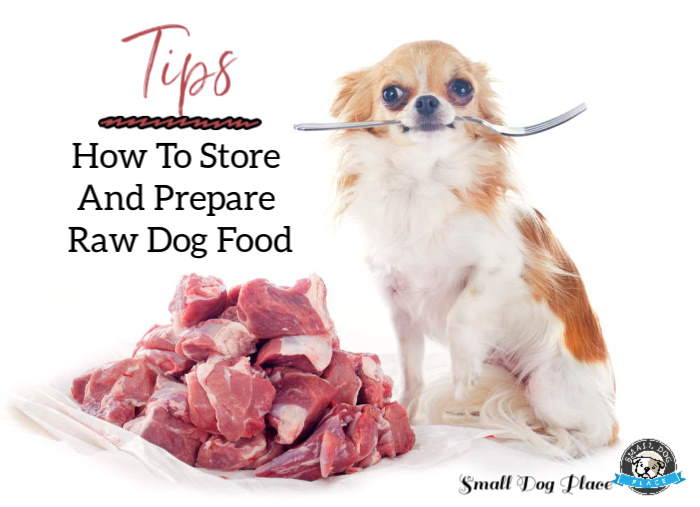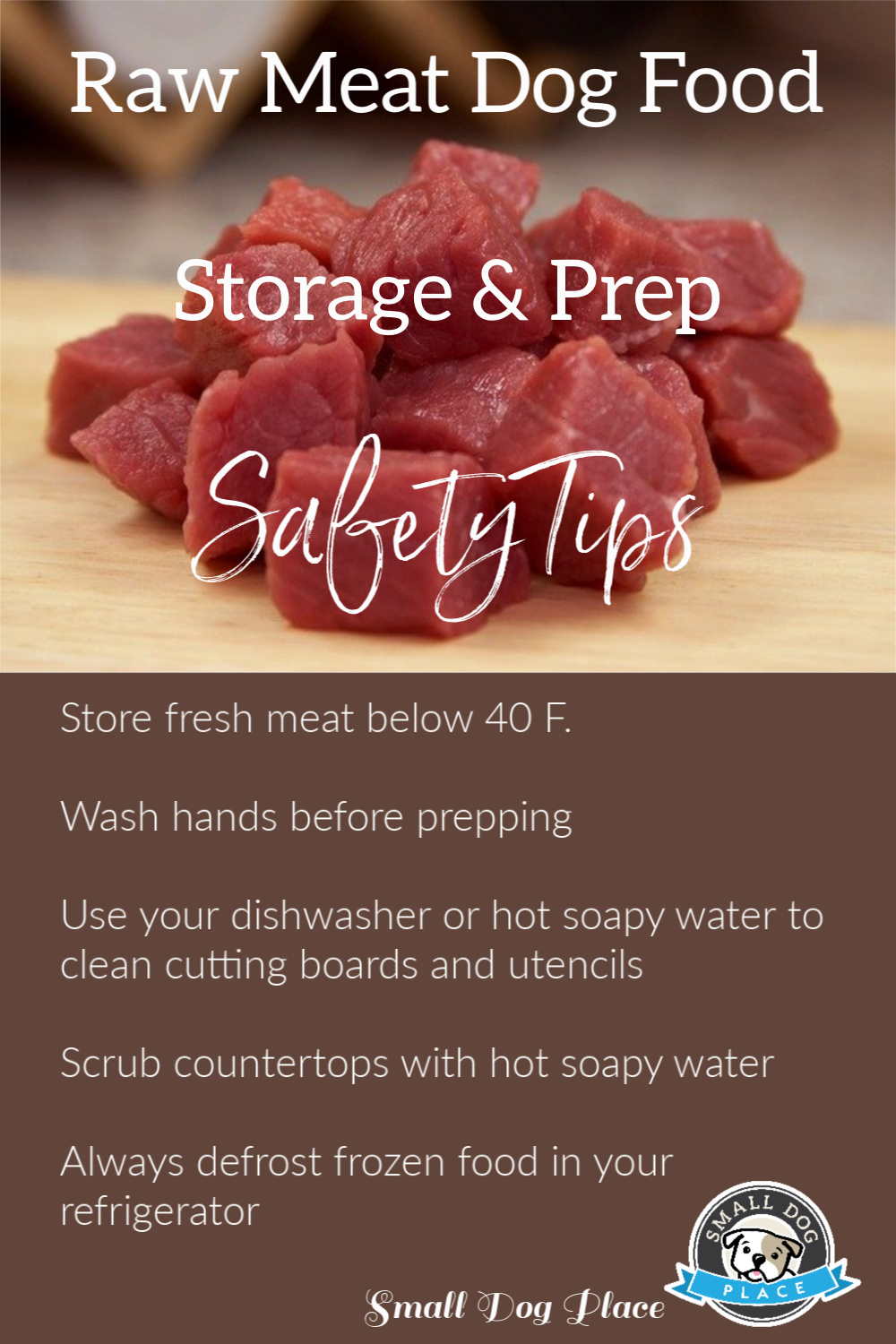- Small Dog Place Home
- Feeding
- Raw Meat Dog Food
Raw Meat Dog Food: Safe Storage and Prep Tips
Raw Meat Dog Food by Emma Williams
If you have decided you would like to start feeding your dog raw food, it is essential to follow specific steps when it comes to storing, handling as well as serving this type of food.
There are health concerns you should be worried about for not only your dog but your family members should the raw food contain microorganisms that cause illnesses. Yet it is possible to avoid these situations.
 Raw Meat Dog Food: Safe Storage and Prep Tips
Raw Meat Dog Food: Safe Storage and Prep TipsTo begin with, first, talk to your vet to find out what type of fresh dog food will be suitable for your pet. Secondly, not all raw foods will contain organisms that cause diseases.
In addition, the immunity of the dog, especially when it comes to the chemical and defensive cellular processes that go on inside the intestines, is usually a highly complex process.
Raw Meat Dog Food
How To Store Raw Food
Storing raw food for your dog is very similar to the methods you use to store your raw foods like chicken and hamburger patties.
You should place the food in secure packaging. This can include a plastic container with a lid, followed by storing the food in your freezer. This assists in stopping bacterial growth and lowering the chances of spoiling.
Freezing raw food at a temperature that is consistent with 0 °F stops microbial growth, which includes yeast and mold. It will also slow down the natural activities of the enzymes that are present in vegetables, fruit, fish, and meat.
Food that you buy from the store should be frozen in portions, which offers an easier way to serve the meals and to pair each of your containers with an expiry date, that the food manufacturer determined.
If you are storing the raw food in your refrigerator, it should be kept at a consistent temperature of 40 °F or below. The USDA's FSIS (Food Safety and Inspection Service), states that bacteria grow more rapidly in temperatures that range between 40 and 140 °F. This is known as the "Danger Zone," with means that some bacteria will double in their numbers in 20 minutes or less. If your refrigerator is set at 40 °F or below, this will usually protect most of your foods.
If the temperature of the food reaches 40° or above, over 2 hours or more, it is better to throw it away as the likelihood of pathogenic bacteria such as Listeria, Salmonella, E. coli, and Campylobacter growing is much higher.
Pathogenic bacteria don't always impact the consistency, flavor, or smell of the food, yet they can result in foodborne illness.
How To Handle And Serve Raw Dog Food
You should always practice caution when handling any type of raw food. Any of the surfaces that the food comes into contact with, which will include your hands, food bowls, knives, cutting boards, or kitchen counters, can become contaminated when the food already contains a pathogenic organism.
The FSIS recommends:
- Wash your hands with water and soap before and after handling raw food.
- Running utensils and cutting boards through your dishwasher or washing them in very hot and soapy water once you have finished using them.
- Keep your counter tops clean and hygienic by washing with soap and hot water after you have prepared food.
When you serve raw foods, take them out of your freezer and then allow the food to defrost in your fridge or on a counter top. Only defrost 1 to 2 meals at a time.
Educate other family members about the right way to prepare and store raw dog food. Only allow adults to feed the food to your dogs. Children are not as reliable when it comes to sanitary habits.
If you follow these tips and guidelines, this will help to protect your pets and your family from disease-causing organisms and bacteria.
Pin for Future Reference
Author Bio
Raw Meat Dog Food by Emma Williams
Emma Williams is an animal lover and pet parent of two four-legged friends, Indie and Beau. She is a professional writer who has been featured on News 9, Fox News, plus lots of pet publications. She currently lives in Sydney, Australia and works for PetBucket.com
About Janice (author and voice behind this site)
Having lived with dogs and cats most of her life, Janice served as a veterinary technician for ten years in Maryland and twelve years as a Shih Tzu dog breeder in Ohio.
Her education includes undergraduate degrees in Psychology with a minor in biology, Early Childhood Education, and Nursing, and a master's in Mental Health Counseling.
She is a lifelong learner, a dog lover, and passionate about the welfare of animals. Her favorite breed for over 50 years has been the Shih Tzu, but she has also lived with Poodles, Maltese, Yorkshire Terriers, Beagles, English Bulldogs, Carin Terriers, and a Cocker Spaniel.
When not writing, reading, and researching dog-related topics, she likes to spend time with her eight Shih Tzu dogs, husband, and family, as well as knitting and crocheting. She is also the voice behind Miracle Shih Tzu and Smart-Knit-Crocheting
Does This Article Deserve Your Thumbs Up?
We always appreciate your support and encouragement. Your thumbs up means so much to us. Please like this article.
If you find this page or any page on Small Dog Place Helpful, or useful in anyway, I'd love it if you would click the small heart found on the bottom right of each page.
You can also share or bookmark this page -- just click on the:

Free Monthly Newsletter
Sign Up for Our Free Newsletter and get our Free Gift to You.
my E-book, The Top 10 Mistakes People Make When Choosing a Dog (and how to avoid them)







